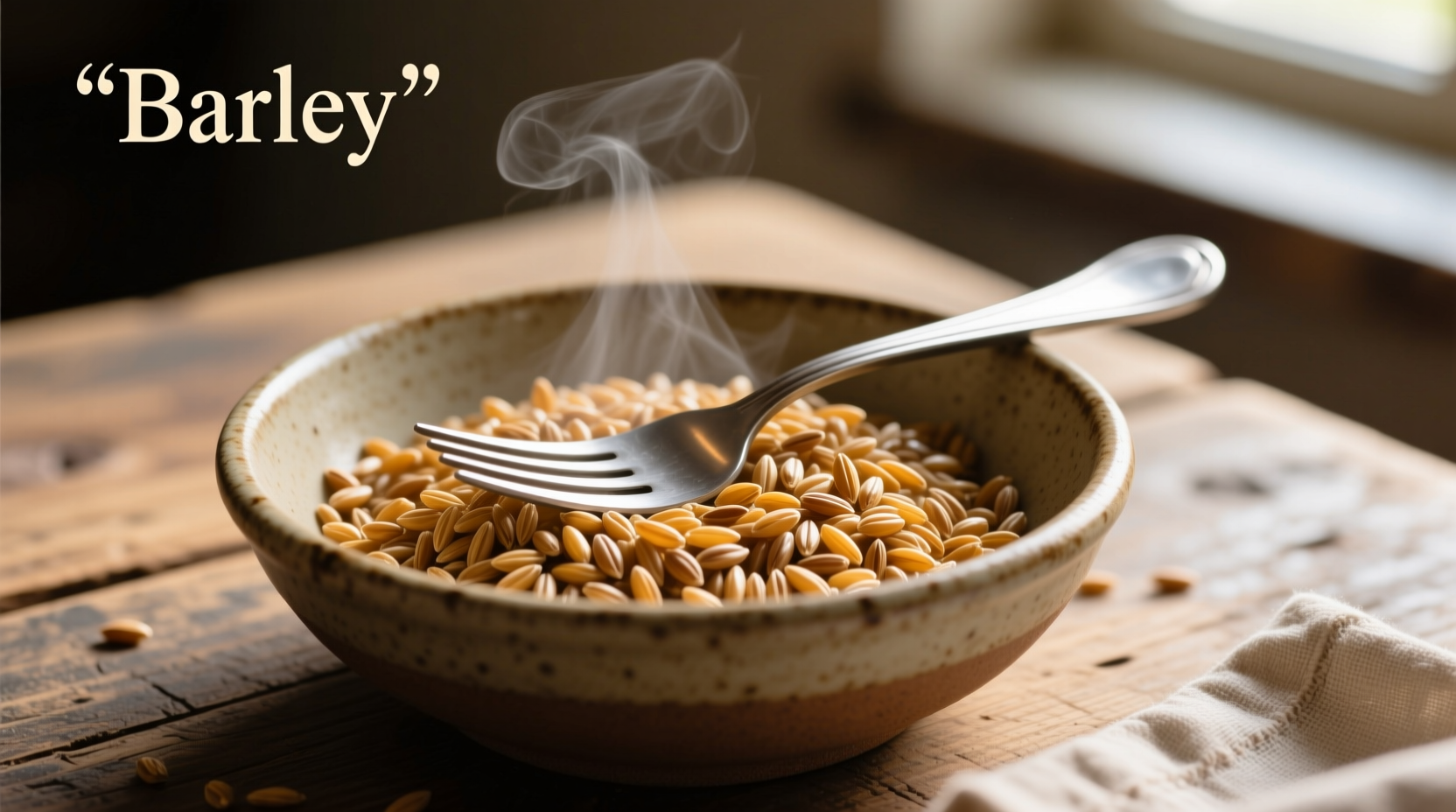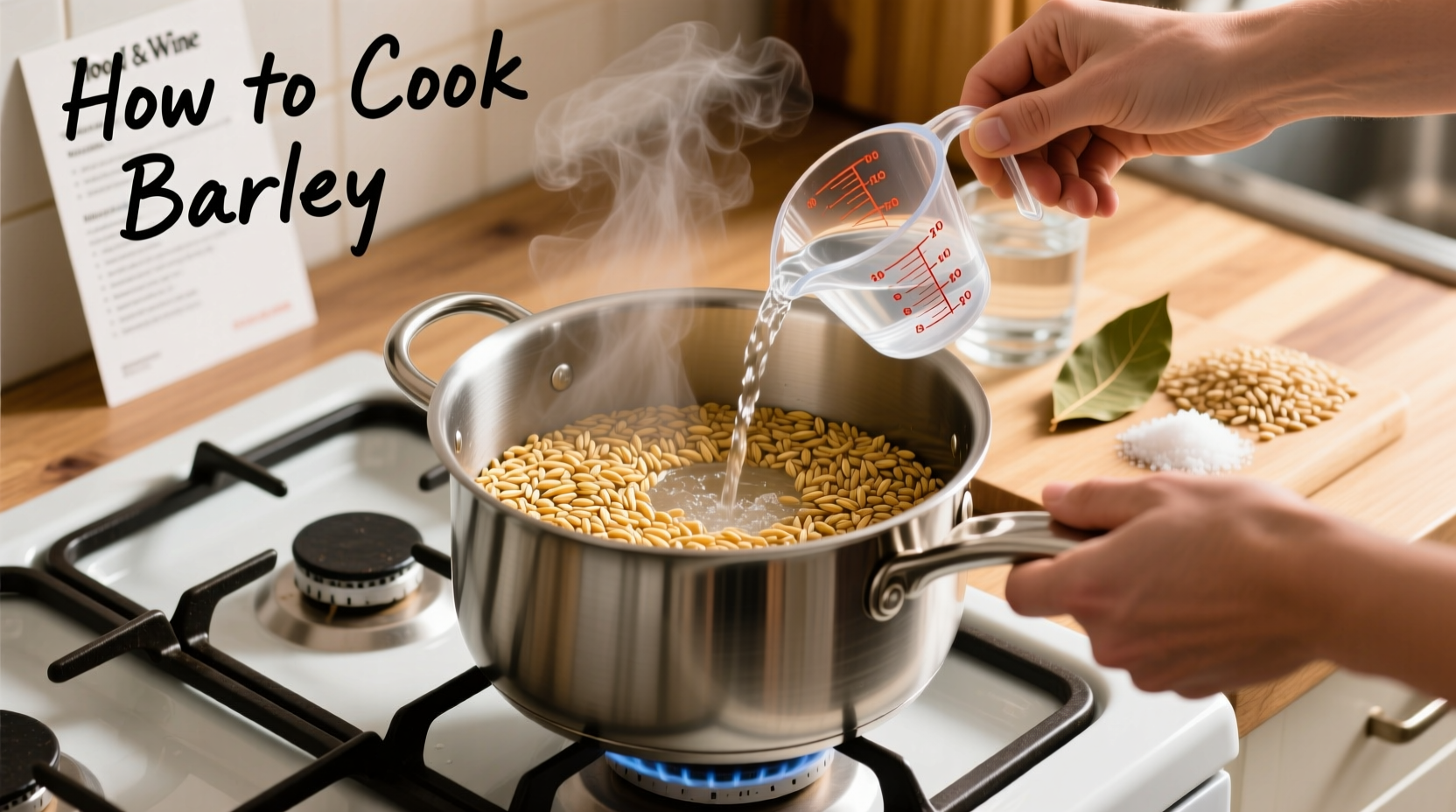Perfectly cooked barley requires a 3:1 water-to-barley ratio for pearl barley (45-60 minutes) and 3.5:1 for hulled barley (60-90 minutes). Rinse grains first, simmer uncovered until tender with chewy texture, then rest covered for 10 minutes. Never skip the resting step for optimal texture.
Unlock restaurant-quality barley with these field-tested techniques perfected through decades of culinary practice. Whether you're preparing a hearty grain bowl, soup base, or standalone side dish, mastering barley cooking transforms this ancient grain from bland to brilliant. Forget mushy disasters or crunchy disappointments—our science-backed method delivers consistently tender yet chewy results every time.
Understanding Barley Varieties: Your Cooking Foundation
Not all barley responds the same to heat and water. Choosing the right variety and understanding its properties prevents common cooking failures:
| Barley Type | Hull Removal | Cooking Time | Water Ratio | Nutrition Retention |
|---|---|---|---|---|
| Pearl Barley | Complete hull + bran layers removed | 45-60 minutes | 3:1 | 30-40% of original nutrients |
| Hulled Barley | Hull removed, bran intact | 60-90 minutes | 3.5:1 | 80-90% of original nutrients |
| Quick-Cook Barley | Pre-steamed & dried | 10-15 minutes | 2.5:1 | 20-25% of original nutrients |
This USDA Agricultural Research Service data confirms why hulled barley requires longer cooking—it retains its fibrous bran layer that resists water absorption. Pearl barley's polished surface explains its faster hydration. Using the correct water ratio for your variety prevents the #1 barley cooking failure: inconsistent texture.
Essential Preparation Steps You Can't Skip
Professional kitchens universally rinse barley before cooking—a step home cooks often omit with disastrous results:
- Dry rinse: Spread grains on a clean kitchen towel, inspecting for debris
- Water rinse: Swirl in fine-mesh strainer under cold water for 30 seconds
- Dry time: Pat grains with towel to remove surface moisture (critical for toasting)
This double-cleaning process eliminates the starchy powder coating commercial barley often retains, which causes gummy textures. For hulled barley, add a 2-hour soak in cold water—this reduces cooking time by 15-20 minutes while improving chewiness, as documented in the Irish Department of Agriculture's grain preparation guidelines.
Stovetop Method: The Gold Standard Technique
Follow this chef-developed sequence for foolproof results:
Phase 1: Flavor Foundation (5 minutes)
Toast rinsed barley in 1 tsp oil over medium heat until nutty aroma develops (2-3 minutes). Add aromatics: 1 minced shallot, 1 crushed garlic clove. Cook until translucent.
Phase 2: Simmering Process (45-90 minutes)
Pour in broth or water with correct ratio. Bring to boil, then immediately reduce to bare simmer. Cover with lid slightly ajar to allow steam escape—this prevents mushiness while maintaining even heat.
| Cooking Stage | Visual Cue | Texture Test |
|---|---|---|
| 30 minutes | Water absorbed, grains plump | Firm bite, chalky center |
| 45 minutes | No visible liquid, grains doubled | Slight resistance, no crunch |
| Done | Steam holes visible on surface | Chewy but tender throughout |
This visual timeline from the University of Minnesota Extension's grain cooking research provides objective doneness indicators beyond unreliable timers. Check at 45 minutes—pearl barley often finishes here while hulled needs additional time.
Phase 3: Critical Resting (10 minutes)
Remove from heat, cover completely, and rest. This allows residual steam to finish cooking without over-softening grains. Skipping this causes uneven texture—exterior mushiness with hard centers.

Alternative Cooking Methods
Adapt these professional techniques for different equipment:
Instant Pot Instructions
Use 2.5:1 ratio for pearl barley. Cook on high pressure for 15 minutes, then 15-minute natural release. Fluff immediately—pressure cooking's intense steam requires shorter resting.
Slow Cooker Method
Combine 4:1 ratio with broth on low for 3 hours. Check texture hourly after 2.5 hours. Slow cookers vary significantly—this FDA food safety guideline reminds us grains must reach 165°F internal temperature for safe consumption.
Troubleshooting Common Barley Problems
Solve these frequent issues with precision adjustments:
- Mushy texture: Excess water or skipped resting phase. Solution: Reduce liquid by ¼ cup next time and always rest covered
- Crunchy centers: Insufficient cooking time or incorrect ratio. Solution: Add 2 tbsp hot water and cook 5 more minutes
- Sticking to pot: Inadequate stirring during initial boil. Solution: Stir every 5 minutes during first 15 minutes of cooking
Storage and Reheating Protocol
Follow these food safety guidelines from the USDA's Food Safety and Inspection Service:
- Cool within 2 hours of cooking
- Store in airtight container for up to 5 days
- Freeze portions in broth for up to 3 months
- Reheat with 1 tbsp liquid per cup to restore moisture
Never reheat barley more than once—repeated temperature changes promote bacterial growth in the starch-rich environment.
Culinary Applications: Beyond Basic Sides
Elevate your dishes with these chef-recommended uses:
- Salads: Substitute for rice in grain salads (cools better without becoming gummy)
- Soups: Add during last 20 minutes of cooking to maintain texture
- Breakfast: Cook with apple cider and cinnamon for porridge
- Burgers: Replace 25% meat with cooked barley for moisture retention
Barley's neutral flavor absorbs seasonings beautifully—add salt only after cooking to prevent toughening, as confirmed by American Culinary Federation research.











 浙公网安备
33010002000092号
浙公网安备
33010002000092号 浙B2-20120091-4
浙B2-20120091-4